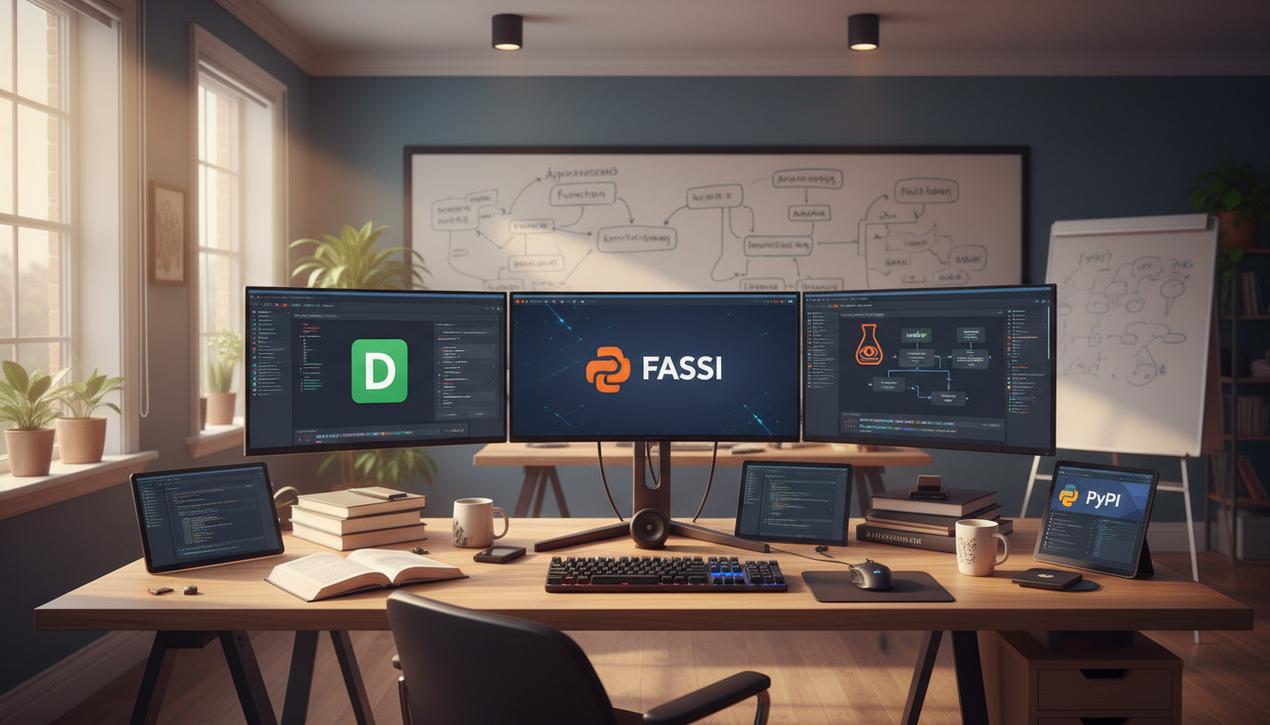How to Create Software: The Complete 2025 Guide


In the age of digital transformation, software is ubiquitous. It powers our smartphones, optimizes our businesses, and shapes our daily lives. The global enterprise software market is projected to exceed $700 billion in 2025, a growth driven by an insatiable need for automation, efficiency, and innovation. Creating software is no longer a project reserved for tech giants. It has become a strategic move for companies seeking a unique competitive advantage and for entrepreneurs looking to solve a specific problem. Whether your ambition is to launch a new mobile application, develop a custom internal tool, or market a SaaS solution, the path of software creation is a structured and demanding process. This comprehensive guide breaks down this journey into 12 key steps, from initial idea validation to post-launch maintenance, to give you all the tools you need to turn your vision into a functional and successful reality.
The Foundations: From Idea to Blueprint
Before writing a single line of code, the preparation phase is absolutely crucial. It determines the relevance, viability, and chances of success for your project. Skipping these steps is the surest way to build software that no one will use.
Step 1: Validate Your Idea and Analyze the Market
Every software creation starts with an idea. But an idea, no matter how brilliant, is not enough. It must be tested against market reality. Ask yourself the right questions:
- What problem does my software solve? The fundamental value of your product lies in its ability to alleviate a “pain point” or meet a clear need for your future users.
- Who is the target audience? Define “personas,” semi-fictional profiles of your ideal users. This will help guide all your future decisions.
- Who are the competitors? Analyze existing solutions. What are their strengths and weaknesses? Is there an untapped niche or an opportunity to do better?
- How will the software be monetized? Think about the business model from the start: one-time purchase, subscription (SaaS), freemium, advertising, etc.
This research phase allows you to confirm that your project has real commercial potential and to refine it before investing significant time and money.
Step 2: Define Objectives and Key Features
Once the idea is validated, you need to translate it into a precise functional scope. This is the specification-writing stage. The goal is to list and prioritize features. A very effective method is to create a Minimum Viable Product (MVP). An MVP is not a rushed version of your software, but a version containing only the essential features that provide value and solve the user’s main problem. This approach allows you to launch the product faster, gather concrete user feedback, and guide future development based on real data rather than assumptions.
Technical and Visual Design
With clear specifications, you can move on to the design phase, where you define the software’s technical architecture and user experience.
Step 3: Choose the Right Technology Stack
The choice of technology is a structural decision. It’s not just about choosing a programming language, but a coherent set of tools (frameworks, databases, cloud services).
- Programming Languages: The choice depends on the platform (web, mobile, desktop) and performance needs. Python is excellent for rapid development and AI, JavaScript (with Node.js) dominates the web, Java and C# are pillars for robust enterprise applications, and Swift or Kotlin are the standards for mobile (iOS and Android).
- Frameworks: Frameworks like React, Angular, or Vue.js for the front-end, and Django, Ruby on Rails, or Express.js—many of which are detailed in this guide to Python frameworks—for the back-end significantly accelerate development.
- Databases: SQL (like PostgreSQL) for structured data or NoSQL (like MongoDB) for more flexibility.
Step 4: Design the Software Architecture
The architecture is the skeleton of your software. It defines how the different components interact to ensure the system’s robustness, security, and scalability. There are two main approaches:
- Monolithic Architecture: All components are grouped into a single codebase. Simpler to start with, but harder to maintain and scale in the long run.
- Microservices Architecture: The software is broken down into small, independent services that communicate with each other. This is the preferred approach for complex, large-scale applications as it offers more flexibility and resilience.
A good architecture must also plan for error handling, data security, and performance.
Step 5: Design the User Interface (UI) and User Experience (UX)
Powerful but unusable software is a failure. UI/UX design is what makes your product enjoyable, intuitive, and effective to use. This stage involves several phases:
- Wireframes: Low-fidelity sketches of each screen to define the structure and layout of elements.
- Mockups: High-fidelity visual previews, often made with the best mockup generators, that incorporate the graphic charter (colors, typography, icons).
- Prototyping: Creating interactive mockups to simulate navigation and test the user journey before development begins.
Investing in UX is not a luxury; it’s a key factor in user adoption and retention.
Development and Validation
This is the phase where plans turn into a functional product. The choice of project management methodology is decisive here.
Step 6: Choose a Development Methodology
Agile methodologies, such as Scrum or Kanban, are the standard today. They involve developing the software in short cycles (sprints) of 1 to 4 weeks. Each sprint delivers an improved and potentially usable version of the product. This iterative approach allows for more flexibility to adapt to changes and user feedback, unlike older “waterfall” methods where everything was planned in advance.
Step 7: Write the Code and Integrate Components
This is the heart of development. Developers write the code following architectural specifications and design mockups. It is essential to adhere to best practices: write clean and commented code, use a version control system like Git (and platforms like GitHub or GitLab) to collaborate effectively, and integrate components gradually.
Step 8: Test, Test, and Test Again
Bug-free software is a myth, but a rigorous testing phase is essential to ensure its quality. Tests should be conducted at several levels:
- Unit Tests: Checking each small part of the code in isolation.
- Integration Tests: Ensuring that the different components work well together.
- End-to-End Tests: Simulating complete user journeys to validate functionalities.
- Performance and Security Tests: Identifying vulnerabilities and bottlenecks.
Involving future users in a beta testing phase is also an excellent way to gather valuable feedback.
The Launch and Life of the Software
The work doesn’t stop once development is complete. Deployment and maintenance are equally critical stages.
Step 9: Deploy the Software
Deployment involves putting the software into production, making it accessible to end-users. This includes configuring servers (often on cloud platforms like AWS, Google Cloud, or Azure), migrating data, and setting up monitoring systems. The use of DevOps practices and CI/CD (Continuous Integration and Continuous Deployment) pipelines helps to automate and secure this process.
Step 10: Protect Your Intellectual Property
Your code and the concept of your software are valuable intellectual property. It’s important to protect it. Copyright automatically applies upon creation in most countries. However, to prove the anteriority of your creation in case of a dispute, it is recommended to register your copyright or explore patents if your software involves a unique invention or process.
Step 11: Communicate and Market
Your software is live, now you need to promote it. Prepare a launch plan: create a presentation website, write user documentation, and implement a digital marketing strategy aligned with the latest innovative marketing trends to attract your first customers. The launch is also a key moment to start gathering feedback from early adopters.
Step 12: Ensure Maintenance and Plan for Evolution
Software is a living product. After the launch, ongoing maintenance is necessary to fix bugs that will inevitably appear. More importantly, you need to listen to user feedback to improve the product and plan future features in a roadmap. It is this cycle of continuous improvement that will ensure the long-term success of your software.
Creating custom software is a strategic investment that can offer a considerable return, whether in terms of internal productivity or commercial revenue. While the process may seem complex, breaking it down into clear steps and adopting an agile methodology makes it much more manageable. Each phase, from initial research to ongoing maintenance, plays a vital role in building a robust, useful, and user-appreciated product. Whether you choose to build an in-house team or collaborate with experts, following this structured roadmap will be your best ally in turning a brilliant idea into successful software.




